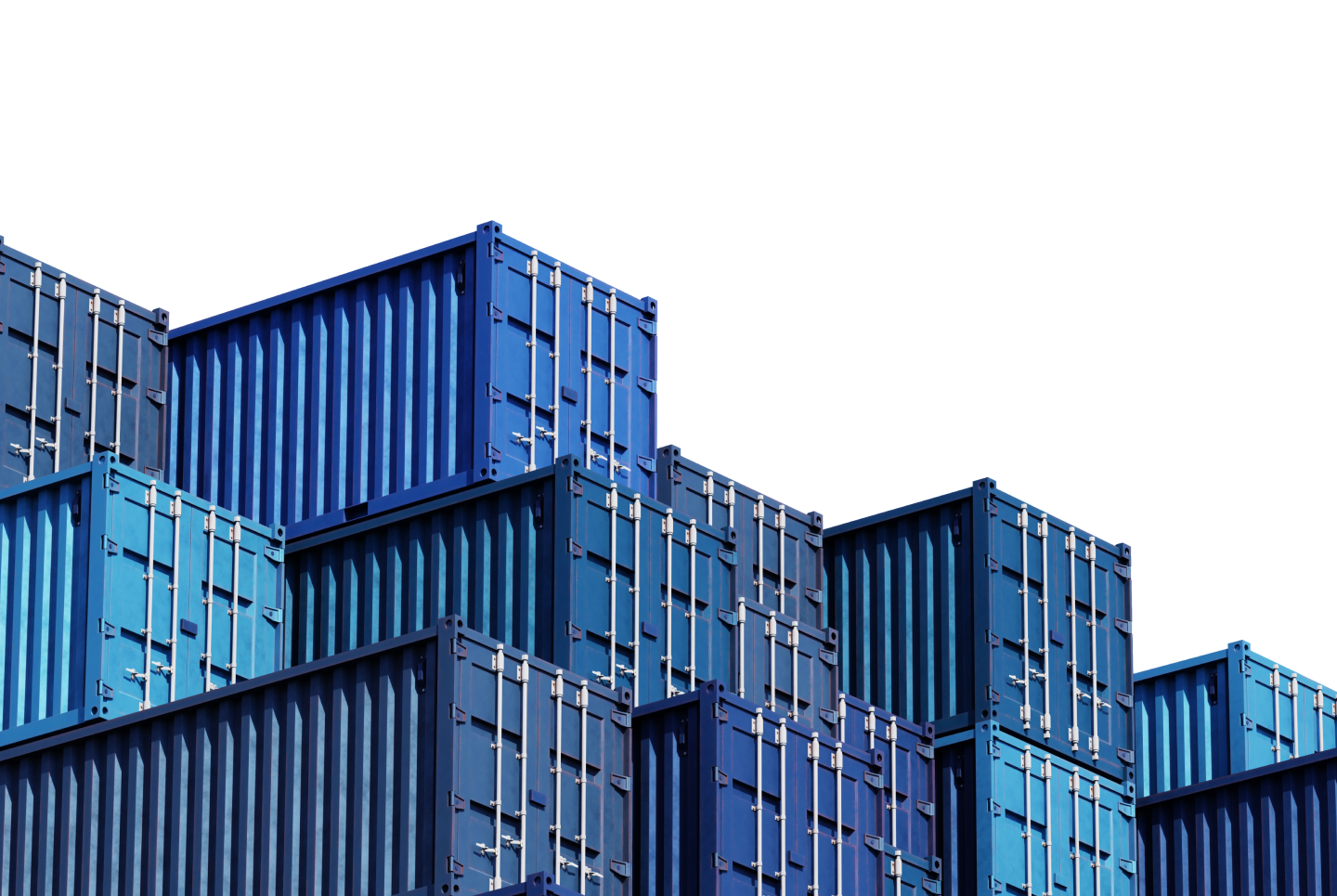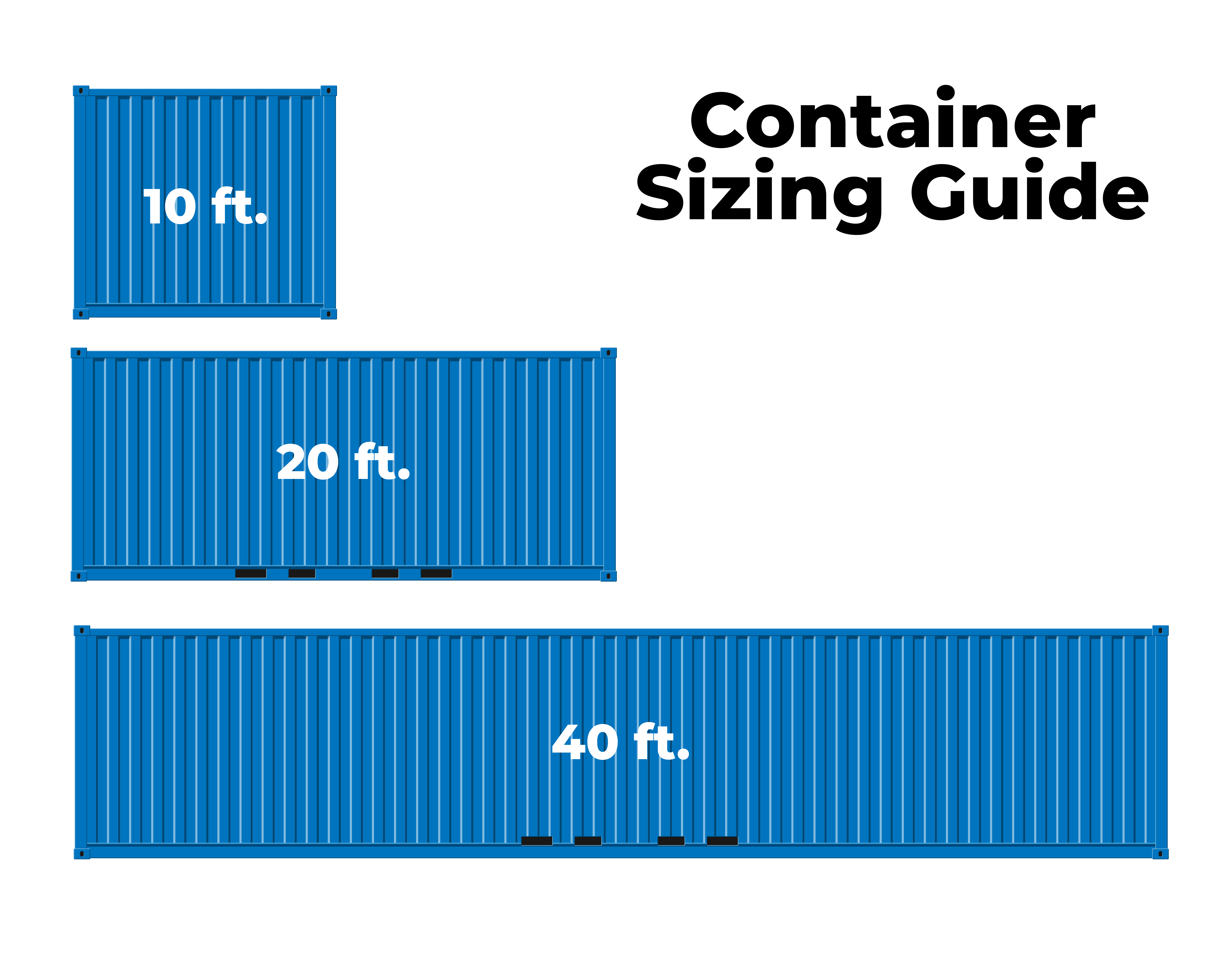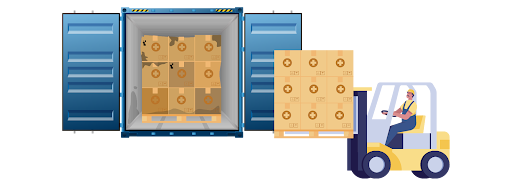
Container shipping is a reliable and efficient way to transport your cargo overseas. When it comes to shipping household goods, it provides affordable international moving rates and highlights the significance of various shipping methods. It provides a cost efficient alternative to shipping by air. That said, it does come along with risks and potential for product damage.
Ensuring your shipping container arrives safely begins with proper preparation. Read on to learn all about shipping containers overseas, common risks involved, and how to overcome them.
Container shipping is a way to transport cargo in a large steel box known as a shipping container. Shipping containers are made in a standardized size to ship efficiently; many cargo boxes can be stacked and shipped together on a single method of transport.
These containers can be shipped on land by train or truck, or shipped overseas by ship. Typically, shipping a container overseas requires a combination of these shipping methods, including ocean freight, for your container to arrive at its final destination.
Shipping containers are used for a wide selection of different products. These may include:
Selecting the appropriate container types, such as 20-foot and 40-foot containers, is crucial for cost-efficiency and ensuring the safe transport of different products. The type of goods transported significantly impacts shipping costs, as efficiency in packing and loading the goods into containers plays a crucial role.

Understanding various container sizes is crucial when considering shipping costs for international moves. Shipping containers are built in a few different standard sizes. These include:
Understanding standard container dimensions is essential to ensure you select the right size for your specific shipping needs.
There are so many reasons to choose shipping containers to ship your products overseas. These include:

For all their benefits, there are several factors and risks involved with shipping containers overseas. Read on to learn what you need to be aware of if you decide to use this shipment method. There may be additional costs associated with mitigating these risks, such as insurance and specialized packing.
Moisture is a common concern in shipping containers. Although these containers provide ample protection, it is possible for moisture to form inside of them. Too much moisture in a shipping container can lead to mold and other types of product damage.
Moisture in a shipping container can be caused by:
Fragile items require specialized packing to prevent moisture damage during transit. Used containers, which are generally more affordable, can be more prone to moisture damage due to potential wear and tear.
Shipping containers can reach extreme temperatures without proper heating, cooling, and insulation. Temps inside your shipping container can range from -22 to 135 degrees fahrenheit, resulting in a number of different types of damage:
During peak season, such as summer or Chinese New Year, these temperature variations can be even more pronounced, further impacting shipping logistics and costs.
Contaminants are another common problem in shipping containers. These may include:
Contamination can lead to additional customs duties and inspection fees, increasing the overall shipping costs. Cleanliness in container ships is crucial to prevent such issues and ensure the safe transport of goods.
If you want your overseas shipment to go off without a hitch, it’s important to invest time in proper planning and preparation. Putting the work in upfront can save you from product damage, shipment delays, and compliance issues down the line.
A freight forwarder can play a crucial role in this process by providing shipping rate calculators and helping you compare costs across different carriers.
Your first task when shipping a container overseas is to find a reliable shipping company. Do research online, ask colleagues and other businesses in your industry, and look for reviews.
A reliable insurance company should have:
Choosing the right moving companies is crucial, especially for international shipping of household goods. They often use flat rack and open top container shipping methods to transport the belongings of a three-bedroom home.
Depending on the type of cargo you’re sending and its destination, your shipment may require different permits and need to abide by regulations. These may include:
This is not a conclusive list of permits and regulations you may need for your shipment. It’s important to check all the requirements of your country of origin and country of receipt to ensure you have the right paperwork in place.
Understanding the required documentation is crucial for a smooth international shipment process. Compliance is especially important in an international move to avoid delays and additional costs.
Finally, it’s time to prepare your cargo for its journey. Follow these steps to ensure safe arrival:
Proper container load is crucial for international shipping logistics, as a full container load ensures speed, safety, and cost-effectiveness compared to Less than Container Load (LCL).
Container shipping prices can vary based on the type of cargo and the level of preparation required.
Follow these tips to protect your cargo no matter where its journey takes it. Understanding the complexities of global shipping can help in managing costs and ensuring a smooth shipping process.
Long distance shipping, such as from the USA to the UAE or from Los Angeles to China, can significantly impact the overall pricing of shipping containers due to factors like routes and container size.
The correct packaging may make the difference between a safe arrival and total loss. Pack products according to this guidance:
Additionally, ensure that personal belongings are packed securely to prevent damage during transit. Proper packaging is also crucial for other cargo, especially when space is limited in a 20-foot container.
Desiccants are materials that absorb excess moisture. They can lower the humidity in your container or absorb moisture that collects in its corners. Shipping container desiccants come in a range of formats, from desiccant bags that can be placed in the corners of your container to desiccant blankets that hang from your container’s ceiling and absorb container rain.
Desiccants are particularly useful in sea freight to manage moisture and prevent damage. Moisture control is also crucial in door to door delivery services to ensure the integrity of goods throughout the logistics process, especially in Lima.
The metal walls of your shipping container are highly temperature sensitive and can undergo dramatic temperature fluctuations. To protect your goods, it’s important to add additional insulation in your container. Shipping container liners are among the most effective insulation methods.
These sleeves line the inside of your container and protect your cargo from extreme temperature fluctuation, container rain, and other types of damage. Proper insulation can also help in managing container shipping rates by preventing damage and reducing additional costs. Additionally, proper insulation is crucial for open top containers to ensure the security and efficiency of transporting goods internationally.

Don’t let common challenges derail your cargo shipment. Handle them with these tips.
Understanding the complexities of international container shipping can help in overcoming common challenges. Choosing the right full container load for your ocean freight shipping can be crucial in ensuring cost-effectiveness, speed, and safety, especially when transporting larger volumes of cargo.
Delays can be common when shipping cargo overseas. Build flexibility into your shipment schedule by allowing about a week of buffer time for your shipment.
Damage can also occur despite proper preparation. If your shipment undergoes damage, document its condition and file insurance claims promptly. Delays and damage can increase the cost to ship, making it important to plan for contingencies. Having control over the entire container can help minimize these issues, as it reduces the risk of delays and damage by ensuring your cargo is handled with care.
When shipping overseas, it’s important to have both cargo insurance and marine liability insurance:
Using a container shipping cost calculator can help in estimating insurance and liability costs. Additionally, understanding international container shipping rates is crucial for accurately assessing insurance needs and managing overall shipping expenses.
Depending on the type of goods you’re shipping and their destination, a number of different documents may be required. This can include import and export licenses, a Bill of Lading, a Certificate of Origin, and a Power of Attorney.
Additionally, customs duties are an important consideration when preparing shipping documents. Accurate documentation for the delivery destination is crucial as it significantly influences the overall shipping costs and ensures smooth customs clearance.
Hazardous materials can be shipped in containers as long as they follow guidance and regulations. In order to ship hazardous materials, you may need:
Shipping costs for hazardous materials can be higher due to additional regulations and safety measures. It is important to use new containers for hazardous materials to ensure maximum safety and compliance with regulations.
To ensure safe delivery when shipping containers overseas, explore solutions from Eurolog Packing Group. We’re dedicated to the protection of your goods and offer solutions to all your shipping problems, from moisture control and temperature stabilization to contamination and other potentially damaging concerns.
Discover how we can help ensure your products arrive safely and see why we have a 100% customer satisfaction rating. Moving overseas requires careful planning and understanding of container shipping best practices. It is also crucial to stay up to date on best practices to adapt to any changes and ensure the most efficient shipping process.

Sandra Malouf is the President of Eurolog Packing Group and has spent her career focused on Industrial Packaging. With a proven track record of helping businesses avoid supply chain disruptions, Sandra’s visionary leadership elevates the industry. She’s committed to developing sustainable practices and continues to shape the future of industrial packaging by listening to the customer and offering unique solutions applicable to various industries across the world. The company’s main focus is temperature stabilization and moisture damage prevention in exports affected by extreme variations in global temperatures.
© 2025 Eurolog Packing Group